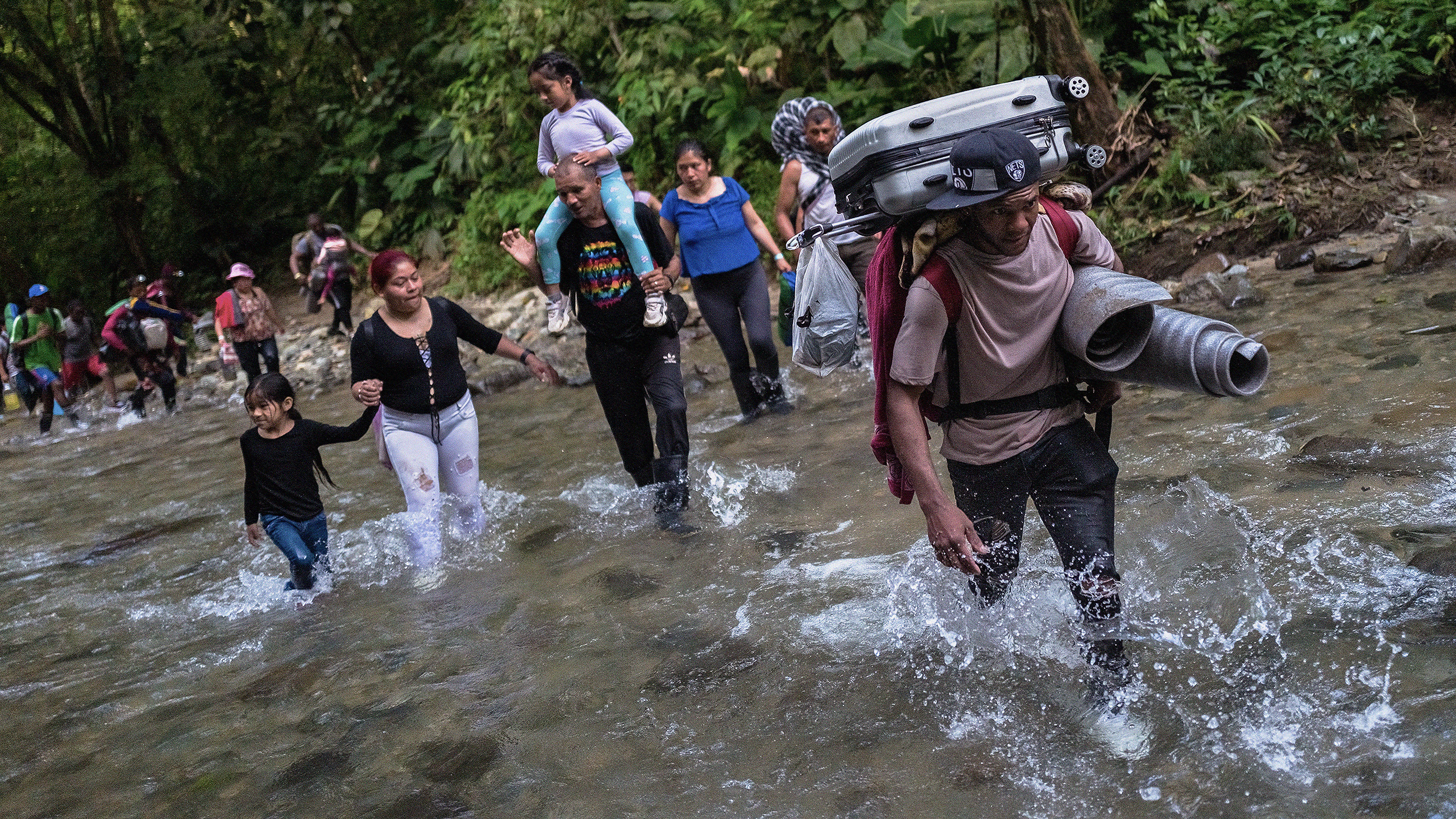Prepare to traverse the U.S. political landscape, Slavoj Žižek style. It’s wild, zig-zagging, and you can practically see the neurons fire when you ask the Slovenian philosopher for his take on the U.S. Presidential election results. Žižek begins by stating that America’s political machinery is broken. Borrowing a term popularized by Noam Chomsky, Žižek states that the traditional media machine for manufacturing consent – all the platforms that support a certain propaganda and subtly build the public to a point of agreement – spluttered and came to a stop on November 8, 2016. At least, in the eyes of the liberals.
Žižek warns that he is in no way pro-Trump, going so far as to call him ‘scum’ and a ‘dirty, disgusting human being’, but there is something all those on the left should appreciate about the President Elect; he did what liberals have been trying to do for decades – he nearly single-handedly destroyed the Republican party. Compared to party members like Ted Cruz and Rick Santorum, Žižek argues that Trump is at least human next to those “aliens”. Trump’s vulgarity is different to theirs; he is wild and uncensored in a way that reveals a common human baseness. This is an appeal everyone but Trump supporters underestimated, the exhibition of bare humanity.
Alluring as it is to some, with it comes what Žižek calls ‘the disintegration of public values, of public manners, this obscene situation where you can talk about whatever you want.” Is political correctness the solution? No, says Žižek, legislating language and expression is a process he fears, especially when it’s institutionalized. When the government stops saying torture and uses euphemisms like ‘enhanced interrogation’ it makes processes less transparent. The whole point is that if a behavior or a thing is deplorable, it should be called exactly what it is so the corresponding shame of speaking it, or enacting it, regulates that behavior. If you’re afraid of war breaking out then breathe easy, because in Žižek’s eyes it was actually Hillary Clinton, the “establishment” candidate compared to Trumps wildcard status, who would have brought us closer to that danger. She speaks the evolved and tricky language of politics, Trump speaks on the baseline.
Žižek weaves so much more between these points – watch it once, and then again, to catch onto the comet tail of his train of thought.
Slavoj Žižek’s most recent book is Refugees, Terror and Other Troubles with the Neighbors: Against the Double Blackmail.
Slavoj Žižek: I know that even in the United States when you have someone like Donald Trump, I know that there is a lot of elitist liberal reaction. Like here we see the limit of democracy but in the wrong sense, in the sense that you see stupid ordinary people are seduced and so on and so on. Well, although Noam Chomsky doesn't like me very much, I admire him sincerely and I must admit that I like his term. I think it's not just a journalistic term, it's a concept, which he took over from American tradition even mainstream right wing liberal of manufacturing consent. You know, Democracy is not only formal rules of elections, democracy is an entire thick network of how political consensus is built; a lot of unwritten rules. And now I think the United States are at a very important moment, at the moment when this machine to build consensus has broken down. Now these are moments which can be catastrophic. In such moments direct fascism can take over, but this can be also moments when the left, or whatever would be the new left, provides a new answer. So my first reaction to those elitists liberals who claim you see the stupid rednecks, white trash or whatever are voting for Trump, yes but it's your responsibility. One moment of truth in all those enraged people who vote for Trump it that they nonetheless so clearly that this traditional machine of manufacturing consent no longer works. To put it in this slightly bombastic and exaggerated Marxist term, the ruling ideology mobilizes certain machinery to keep people in check, to control the excesses and so on. That machinery no longer works.
rnAnd here I'm not just a pessimistic, in contrast to liberals for whom Trump is the ultimate devil, it's a nightmare and so on, I claim it's much more complex. Of course Trump is almost but not quite proto fascist phenomenon, but it's because they, the liberal centrist mainstream because they failed. And that's why, not that I like in anyway Trump, Trump is scum, trash and so on, but my but is this one, first Trump nonetheless if you are a leftists you should admire him sincerely. He did something wonderfully. He almost single-handedly destroyed the Republican Party. What I mean you have two main vaguely orientations, the Christian fundamentalists in the party hardliners and this Republican liberal enlightened big business elite. Both of them are more or less horrified of Trump. And Trump is vulgar, but in his very vulgarity you can see a common human baseness, opportunism, now I will say something horrible, but for me people like Ted Crews or you remember eight years ago Rick Santorum, there's something much worse. Trump is a dirty disgusting human being, do you really think that Rick Santorum is a human being? I think that they are aliens. There's something so monstrous about them. That's my first one.
rnMy second point is that I never trusted this absolute obsession with Trump. Oh now we should be all together just to stop Trump, for this we sacrificed Bernie Sanders. This is how Hillary got us. Hillary is not just LBGT rights, a little bit more progressive, Hillary is today the vote of the establishment even of the Cold War establishment. Do you know that most of the big names of from the area of George Bush, Paul and so on. They moved to Hillary now. Hillary is not only the voice of the liberal establishment, she's also the voice of let's call it Cold War establishment. Now in the last days there was some propaganda against Trump saying oh but can we trust this guy? He will bring us into a new world war. No, I'm much more afraid that Hillary will do this. So again, in no way I am for Trump. He personifies what I was talking about this disintegration of public values, of public manners, this obscene situation where you can talk about whatever you want. Again, things which years ago were unthinkable as part of a public debate are now normalized, open racism and so on. And here I think political correctness doesn't work. Because political correctness is a desperate attempt when public mores all these unwritten rules which tell you what is this and what is not, break down, political correctness tries directly to legislate. This expression is to be used, that expression is to be used and so on and so on.
rnWhat makes me afraid of these this procedure is the following: do you remember how to years ago or even three or four when all this debate about torture began, waterboarding and so on? The U.S. Army did something very nice, they no longer talked about torture but about I think the term was enhanced interrogation technique. And this is for me establishment version of political correctness. You put a nice her name like I can well imagine that ten years from now, and it's not a joke I claim, rape will be called well why not enhanced seduction technique. Like this basic politically correct idea that you use words which will not hurt other, I totally subscribe to this when we are dealing with all this marginal sexual identities which can traumatize you and so on, but I absolutely don't think that this is any kind of universal right, not to be called in a way which hurts you. Let's take a big criminal corporation boss who maybe also wants to see him as a humanitarian. No he should be publicly called with words which will hurt him and that's the whole point that he should be hurt and so on and so on.
rnSo again, I don't to like this narcissistic idea of the ultimate horizon do feel hurt, are you wounded or not and so on and so on. I mean this is a very ambiguous topic. Of course you can in this way defending gay rights, the exclusion of LGBT people and so on, but then what would prevent white Arians or whatever, white power people to say sorry guys but we are hurt if you attack us like that and so on. No, in politics we have authentic enemies. Everyone should not be respected in politics and so on. Politics is a real struggle of life and death.







